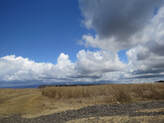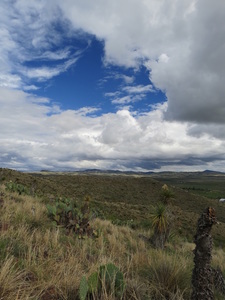 In a recent Sunday Gospel reading Jesus asked His disciples the question, “Who do you say that I am?” We have probably heard this reading many times, though perhaps we spend more time on what comes later (when Peter rebukes Jesus saying he will not let Jesus be put to death), than we do in thinking about the value of the question itself. When Jesus asked the question it seemed to come ‘out of the blue’ as they were on their way to the villages of Caesarea Philippi. It seems to be a sudden question at a strange time. But no matter why He timed it during this part their time together, it got to the heart of their relationship with Him. In reflecting upon this I found myself wondering how I would respond if He were to ask it of me. Obviously, we have the benefit of knowing more than the apostles knew at that point since we are living after Jesus’ death and resurrection took place, but it is still a very compelling question. Who do we say that He is? This question is no less at the heart of our relationship with Jesus than it was for the apostles. What first struck me about this gospel passage is its context. Jesus and the disciples were walking to Caesarea Philippi which was at a distance from Bethsaida where they had spent some time. (If my research is correct, it is a journey of approximately 20 miles.) It was during this lengthy trek that Jesus posed the question. It could have been that this was a time when they were truly alone and without distraction, and thus it was appropriate for Jesus to have the discussion with them. But it also made me wonder if there is something to the aspect of being on a journey which is important as to the reason He chose this particular time for such a question. Both of these possibilities are important to consider as we ask ourselves the same question. Who do we say that Jesus is? 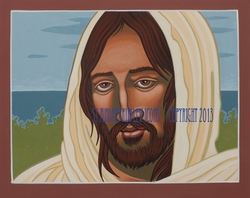 It seems to me that in order to get to the heart of a relationship with anyone we have to have some time to truly spend with that person, alone and undistracted. And it also seems to make sense that as we grow in love with a friend, we would reflect upon the quality of the relationship, how that person brings out the best in us, and who that other person is relative to our own life. This would be especially crucial in terms of our relationship to Jesus. If we do not reflect upon the quality of our relationship with Him, what He brings out in us (calls us to be), and how He impacts our life, then the odds are the relationship is in a pattern of inertia and not one of vibrancy and growth. Therefore time spent alone with Him without distractions (over which we have control) is important. That is, we need to be intentional in the time we spend with Him in prayer, not simply catching snippets of prayer-time here and there. Similarly, our lives are a journey from God and back to God with a lot of twists and turns in between. It is important that along the way we hear Jesus ask who we think He is in order to be in touch with the great graces, especially those of His mercy and love, which He is offering us. He asks the question not to test us and not because He is out of touch with our faith in Him, but rather because He wants us to hear our own answer. Jesus was not asking the apostles because He wanted to know what the latest gossip was about Him. He already knew that they had a sense that He was greater than John the Baptist and Elijah. He also knew they were understandably confused. Therefore Jesus seems to ask the question more for their sake than for His own. He wants them to hear their own reply in order that they might grasp who it was that they were with. He wants them to come to know who He is: by challenging them with the question they have to wrestle with the answer. 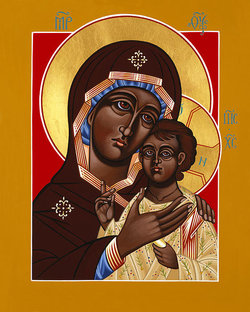 As I mentioned earlier, spending time with Jesus in prayer is essential, although reading and pondering the gospels is important, too. But like the apostles, we must spend time with the One who is already in our hearts, listening and discerning the movements that come through our prayer. It is true that the more we spend time with Jesus, the more like Him we become. Letting Jesus into our hearts more deeply will help us to grow in mercy, understanding, and love. This is because the more we are with Him the more we realize how much we have been forgiven, how much we are loved, and we learn the way to follow. The more He gives us mercy and love, the more mercy and love we have to share with others. It is also important that we look to the holy ones who have gone before us. They can show us a way to imitate Jesus and also of recognizing Jesus in those who are around us. The first and best example of this is Mary, the mother of Jesus. It was her openness to God and God’s plan which made her a perfect choice to be given the great gift and task of being the mother of His own Son. Mary had to have a sense of what it meant that He was the Son of God so that she could be a fitting mother to Him. Simply knowing His identity was not enough. She needed to grow in understanding of what it meant that Jesus was God and man. Luke tells us she continually pondered things in her heart as she struggled to understand the deeper meaning of the mysteries of her Son’s life. Just because she was His mother and was without sin does not mean she had perfect understanding. Therefore, we can learn from her that pondering who He is remains a life long journey. 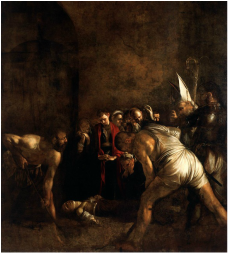 Also we can learn from the martyrs who gave their lives for Jesus. A person does not give up his or her life unless they are truly devoted to the One for whom they sacrifice. The martyrs were so passionate about their love for Jesus that they were willing to die gruesome deaths for Him and to give witness to all that Jesus taught and offered to us. In order to have such a dedication and so great a love for Jesus and His people, one has to know Him intimately. Martyrs did not shed their lives lightly; they were on fire with love for Jesus, giving their all for Him as He had given their all for them. We can learn to be as passionate in our love, sacrificing our own needs from time to time in order to live the gospel. Another important point raised by Jesus’s question is whether we can discern His presence, learning to recognize Him when He is ‘in one of His more distressing disguises,’ as Bl. Teresa of Calcutta was fond of saying. We need to know who He is such that we are able to recognize Him in the poor and the downtrodden, the lonely, the marginalized, and all the beloved of God. Do we know who He is when He comes to us as one who is in need or maybe even in someone who is challenging, one who we do not care to be around? Do we welcome His presence in our own hearts? If He has a home within our heart, then we will come to experience the depth of His love and mercy for us, which we can then extend outward to others. We are not intended to understand all the intricacies of the mystery of who He is, but we are intended to know that He is love, a love which never is extinguished and which always yearns to heal us and our world, a love which longs to have us with Him forever, a love which sees us as beautiful, and a love which desires nothing more than that we accept His love and try to love Him back.  “Who do you say that I am?” Let us be able to say from the depths of our heart: “You are the Messiah, the Son of God, who has come into the world in love for each one of us. You are the One who loves us beyond our ability to comprehend and in whom I find my strength. You are the One whom I love.” May we be inspired by the Holy Spirit to continually seek Jesus so we might better know who He is and how greatly He loves us! May we spend the time in prayer which we need in order to come to know the Gospel message taught by Jesus so we can better incorporate it into our lives! May we realize how greatly we are forgiven, graced, and loved so that we might be inspired to pass it on to others! May we come to recognize Jesus, especially when He comes ‘in His most distressing disguise,’ in the poor and forgotten, the needy and wounded! And may we respond in love to all those who are in need of coming to know Jesus! Let us continue to meet in the Heart of Jesus! Peace! ©Michele L. Catanese The first and last photos are mine. The first was taken in west Texas and the photo at the end of the post was taken while in southern New Mexico. The next two works are by Fr. William Hart McNichols. First is an image called The Galilean Jesus, found at http://fineartamerica.com/featured/the-galilean-jesus-266-william-hart-mcnichols.html The second is an icon called The Petrovskya Icon of The Mother of God and it can be found at http://fineartamerica.com/products/the-petrovskya-icon-of-the-mother-of-god-128-william-hart-mcnichols-art-print.html Finally the last painting is The Burial of Lucy by Caravaggio. I chose this because St. Lucy was a martyr and I wanted to have an image depicting the sacrifice of the martyrs. Comments are closed.
|
Heart Speaks to Heart
|

 RSS Feed
RSS Feed
